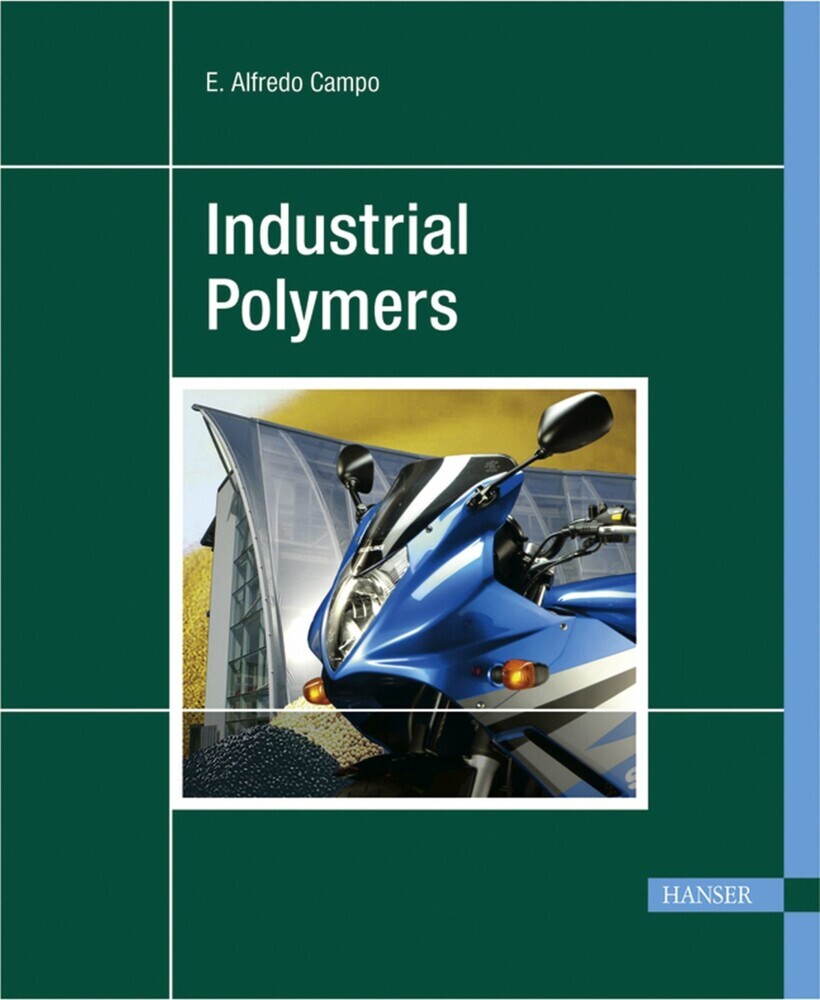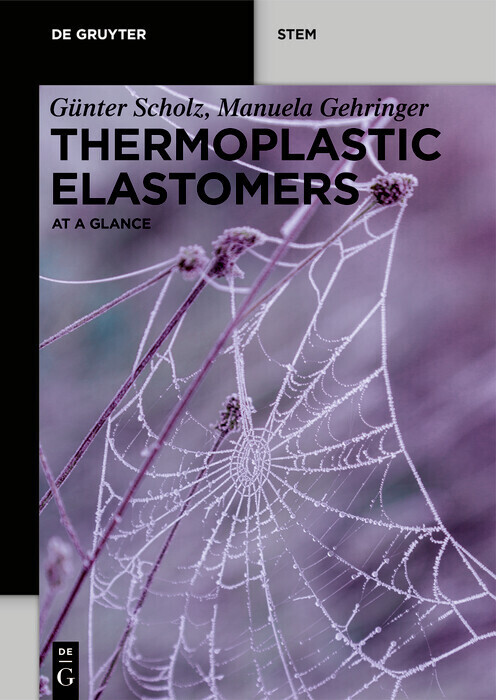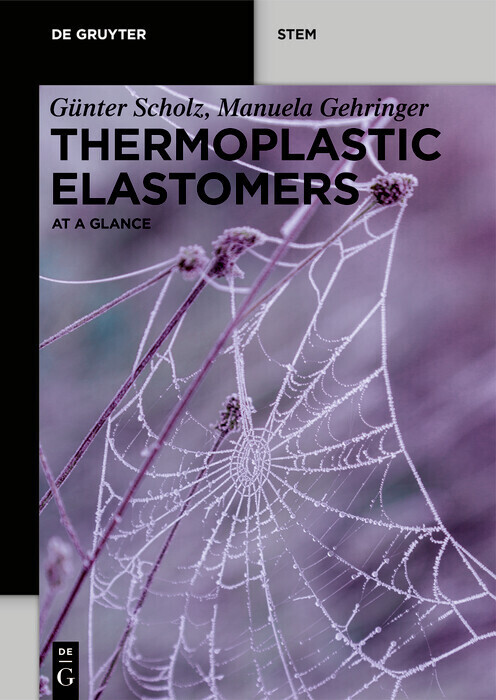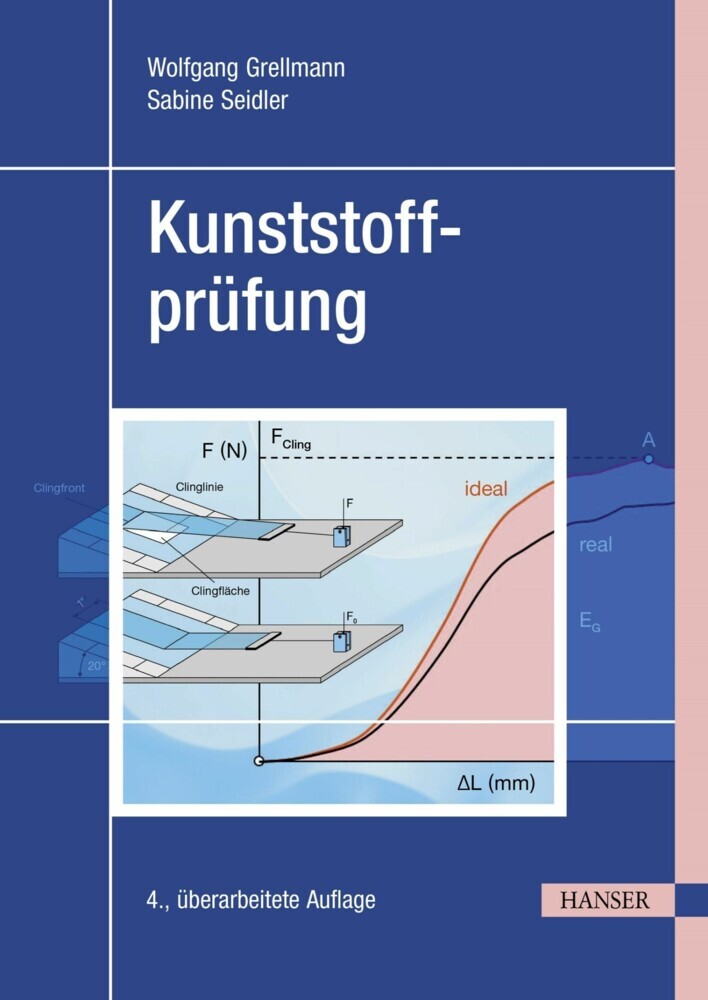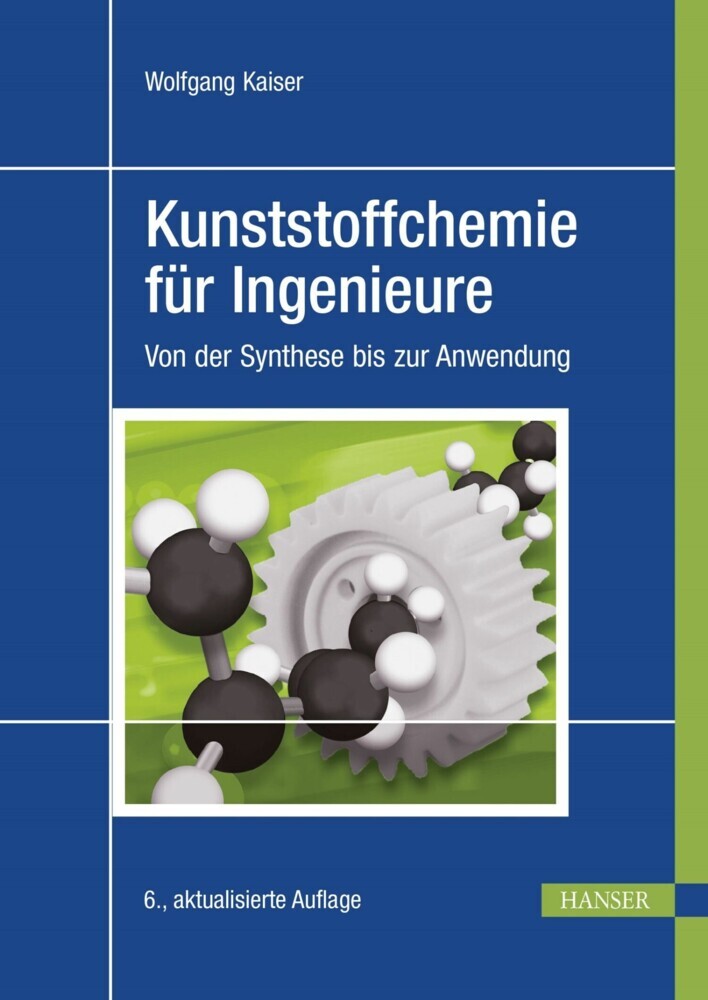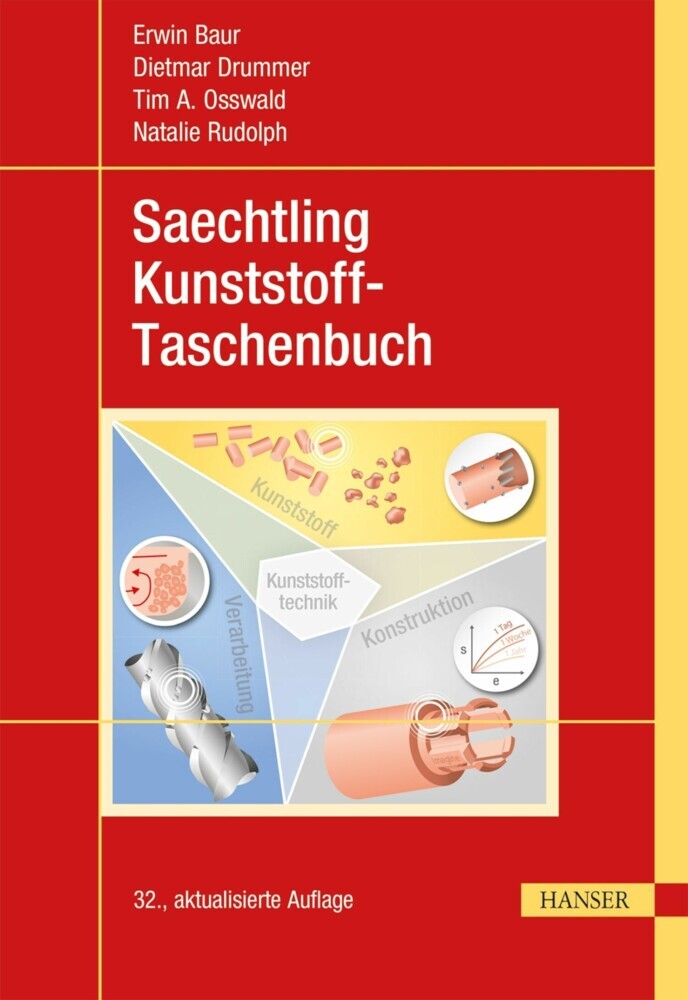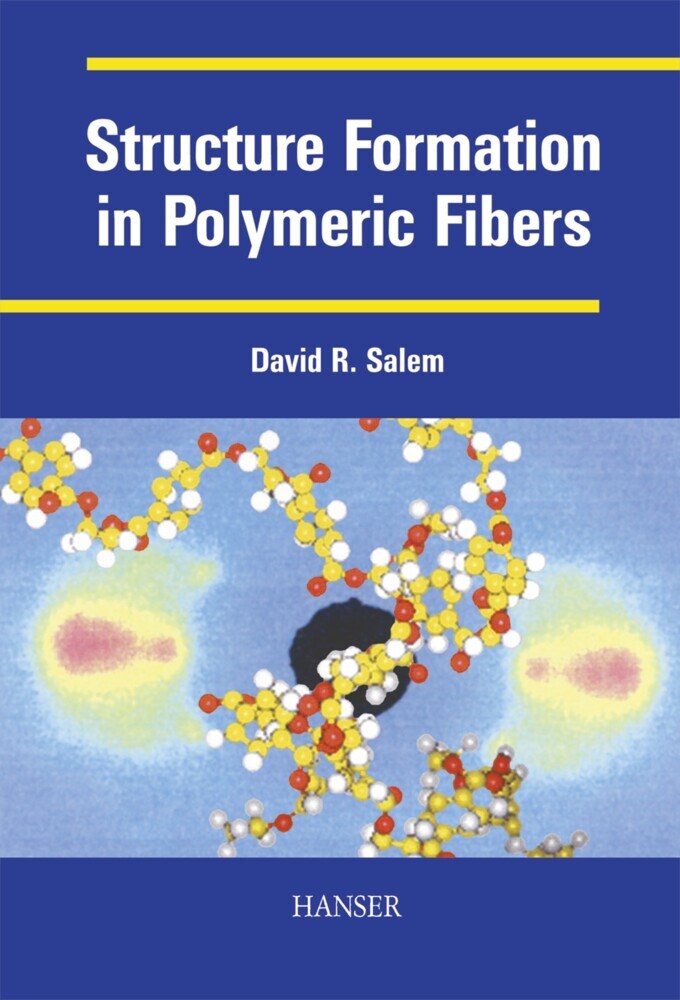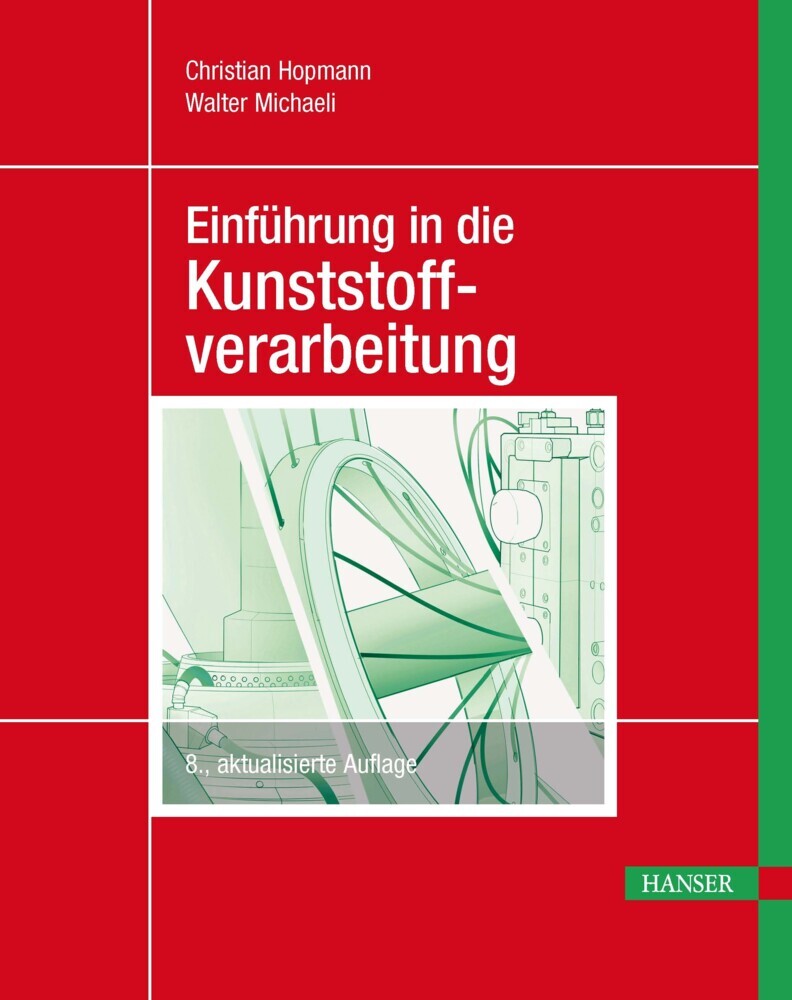Industrial Polymers
Industrial Polymers provides a comprehensive and very practical overview of the various plastic materials used in today's industrial applications. Its focus is on material properties and areas of application. All industrially significant plastic families and grades are introduced following the same approach: their chemical constitution, manufacturing, properties, processing, and end use applications. The consistent presentation allows easy comparison of different materials for the reader and will help with the initial identification of suitable plastic materials for a given end-use.
Ample full-color illustrations are testimony to the fact that plastic materials are the ultimate tribute to man's creativity and inventiveness.
Content:
Polymeric Materials
Thermoplastic Polymers
Thermoplastic Elastomers (TPE)
Liquid Injection Molding Silicone (LIM®)
Thermoset Polymers
Ample full-color illustrations are testimony to the fact that plastic materials are the ultimate tribute to man's creativity and inventiveness.
Content:
Polymeric Materials
Thermoplastic Polymers
Thermoplastic Elastomers (TPE)
Liquid Injection Molding Silicone (LIM®)
Thermoset Polymers
1;Preface;8 2;Contents;10 3;1 Introduction to Industrial Polymers;16 3.1;1.1 Beginning of Industrial Polymers;17 3.2;1.2 Polymer Families;19 3.3;1.3 Thermoplastic Polymers;20 3.3.1;1.3.1 Classifi cation of Polymers by Performance;20 3.3.2;1.3.2 Molecular Structure of Industrial Polymers;22 3.4;1.4 Manufacturing of Industrial Polymers;23 3.5;1.5 Compounding the Industrial Polymers;27 3.6;1.6 Additives;28 3.7;1.7 Fillers and Reinforcements;29 3.8;1.8 Impact Modifi ers;30 3.9;1.9 Colorants;30 4;2 Polymeric Materials;32 4.1;2.1 Acrylonitrile-Butadiene-StyreneCopolymer (ABS);32 4.1.1;2.1.1 Advantages of ABS;33 4.1.2;2.1.2 Disadvantages and Limitations of ABS;34 4.1.3;2.1.3 Typical Applications of ABS;34 4.2;2.2 Acetal (POM, Polyacetal);35 4.2.1;2.2.1 Advantages of Acetal;38 4.2.2;2.2.2 Disadvantages and Limitations of Acetal;38 4.2.3;2.2.3 Typical Applications of Acetal;38 4.3;2.3 Polymethyl Metacrylate (Acrylic, PMMA);40 4.3.1;2.3.1 Advantages of Acrylic;41 4.3.2;2.3.2 Disadvantages and Limitations of Acrylic;41 4.3.3;2.3.3 Typical Applications of Acrylic;42 4.4;2.4 High Temperature Nylon (HTN);42 4.4.1;2.4.1 Advantages of HTN;43 4.4.2;2.4.2 Disadvantages and Limitations of HTN;44 4.4.3;2.4.3 Typical Applications of HTN;44 4.5;2.5 Ionomer Polymers;45 4.5.1;2.5.1 Advantages of Ionomers;46 4.5.2;2.5.2 Disadvantages and Limitations of Ionomers;46 4.5.3;2.5.3 Typical Applications of Ionomers;47 4.6;2.6 Liquid Crystal Polymer (LCP);47 4.6.1;2.6.1 Advantages of LCP;48 4.6.2;2.6.2 Disadvantages and Limitations of LCP;48 4.6.3;2.6.3 Typical Applications of LCP;49 4.7;2.7 Polyamide (PA, Nylon);49 4.7.1;2.7.1 Advantages of Nylon;52 4.7.2;2.7.2 Disadvantages and Limitations of Nylon;52 4.7.3;2.7.3 Typical Applications of Nylon;53 4.8;2.8 Polyetherimide (PEI);55 4.8.1;2.8.1 Advantages of PEI;56 4.8.2;2.8.2 Disadvantages and Limitations of PEI;56 4.8.3;2.8.3 Typical Applications of PEI;57 4.9;2.9 Polyarylate (PAR);57 4.9.1;2.9.1 Advantages of PAR;59 4.9.2;2.9.2 Disadvantages and Limitations of PAR;59 4.9.3;2.9.3 Typical Applications of PAR;60 4.10;2.10 Polyetherether Ketone (PEEK);60 4.10.1;2.10.1 Advantages of PEEK;61 4.10.2;2.10.2 Disadvantages and Limitations of PEEK;62 4.10.3;2.10.3 Typical Applications of PEEK;62 4.11;2.11 Polycarbonate (PC);62 4.11.1;2.11.1 Advantages of PC;64 4.11.2;2.11.2 Disadvantages and Limitations of PC;64 4.11.3;2.11.3 Typical Applications of PC;65 4.12;2.12 Modifi ed Polyphenylene Oxide (PPO);66 4.12.1;2.12.1 Advantages of PPO;67 4.12.2;2.12.2 Disadvantages and Limitations of PPO;68 4.12.3;2.12.3 Typical Applications of PPO;68 4.13;2.13 Polybutylene Terephthalate (PBT);69 4.13.1;2.13.1 Advantages of PBT;70 4.13.2;2.13.2 Disadvantages and Limitations of PBT;70 4.13.3;2.13.3 Typical Applications of PBT;70 4.14;2.14 Polyethylene Terephthalate (PET);71 4.14.1;2.14.1 Advantages of PET;73 4.14.2;2.14.2 Disadvantages and Limitations of PET;74 4.14.3;2.14.3 Typical Applications of PET;74 4.15;2.15 Polyethylene (PE);74 4.15.1;2.15.1 Advantages of PE;76 4.15.2;2.15.2 Disadvantages and Limitations of PE;76 4.15.3;2.15.3 Typical Applications of PE;77 4.16;2.16 Ethylene Vinyl Acetate (EVA);78 4.17;2.17 Ethylene N-Butyl Acrylate (ENBA);78 4.18;2.18 Ethylene Methyl Acrylate (EMA);79 4.19;2.19 Ethylene Ethyl Acrylate (EEA);79 4.20;2.20 Ultrahigh Molecular WeightPolyethylene (UHMWPE);79 4.21;2.21 Metallocene Polyethylene (MPE);79 4.22;2.22 Polytetrafl uoroethylene (PTFE);80 4.22.1;2.22.1 Advantages of PTFE;83 4.22.2;2.22.2 Disadvantages and Limitations of PTFE;83 4.22.3;2.22.3 Typical Applications of PTFE;84 4.23;2.23 Polyphenylene Sulfi de (PPS);85 4.23.1;2.23.1 Advantages of PPS;86 4.23.2;2.23.2 Disadvantages and Limitations of PPS;86 4.23.3;2.23.3 Typical Applications of PPS;87 4.24;2.24 Polypropylene (PP);87 4.24.1;2.24.1 Advantages of PP;89 4.24.2;2.24.2 Disadvantages and Limitations of PP;89 4.24.3;2.24.3 Typical Applications of PP;90 4.25;2.25 Polystyrene (PS);91 4.25.1;2.25.1 Advantages of PS;92 4.25.2;2.25.2 Disadvantage
Campo, Alfredo E.
| ISBN | 9783446445918 |
|---|---|
| Artikelnummer | 9783446445918 |
| Medientyp | E-Book - PDF |
| Copyrightjahr | 2015 |
| Verlag | Carl Hanser Fachbuchverlag |
| Umfang | 180 Seiten |
| Sprache | Englisch |
| Kopierschutz | Digitales Wasserzeichen |

